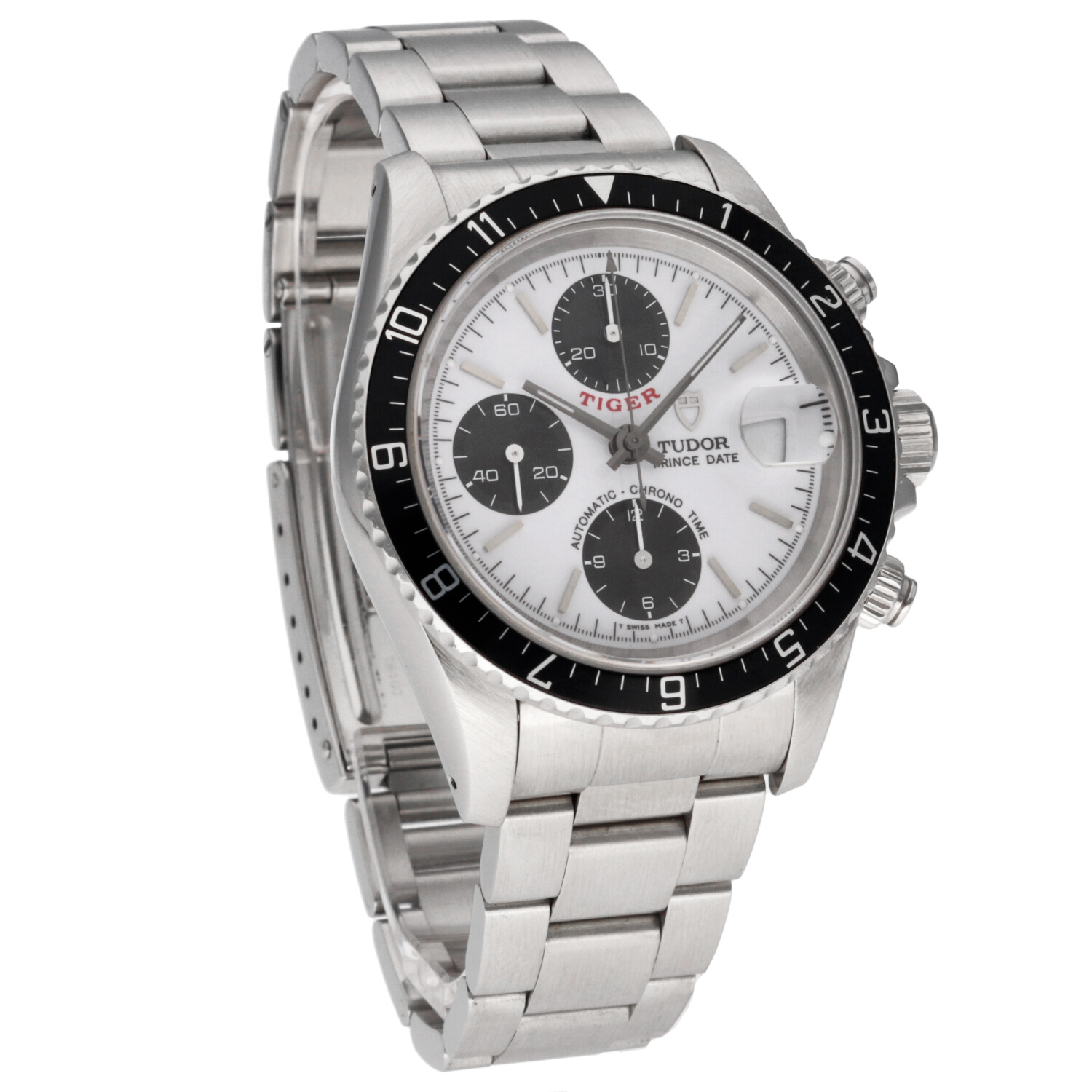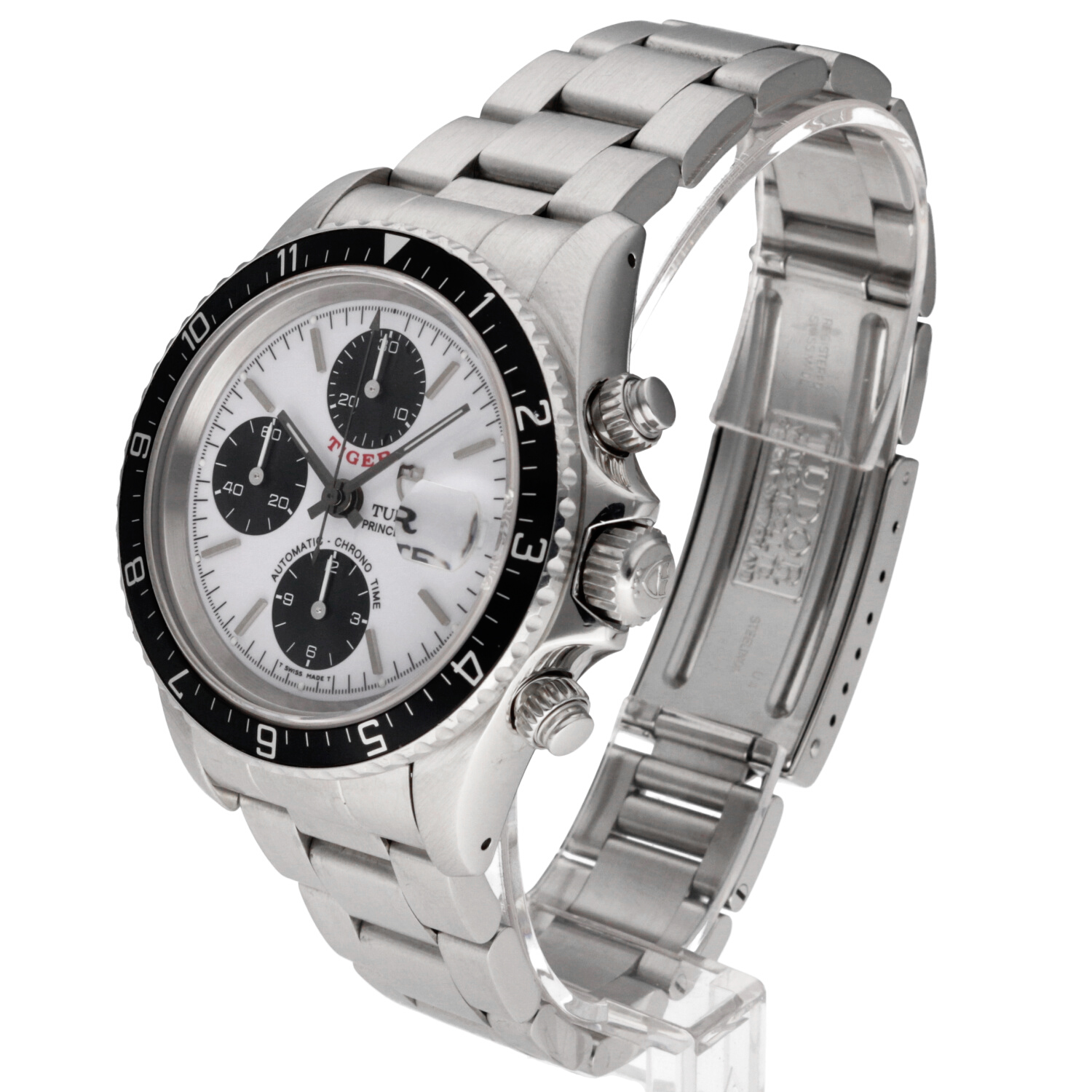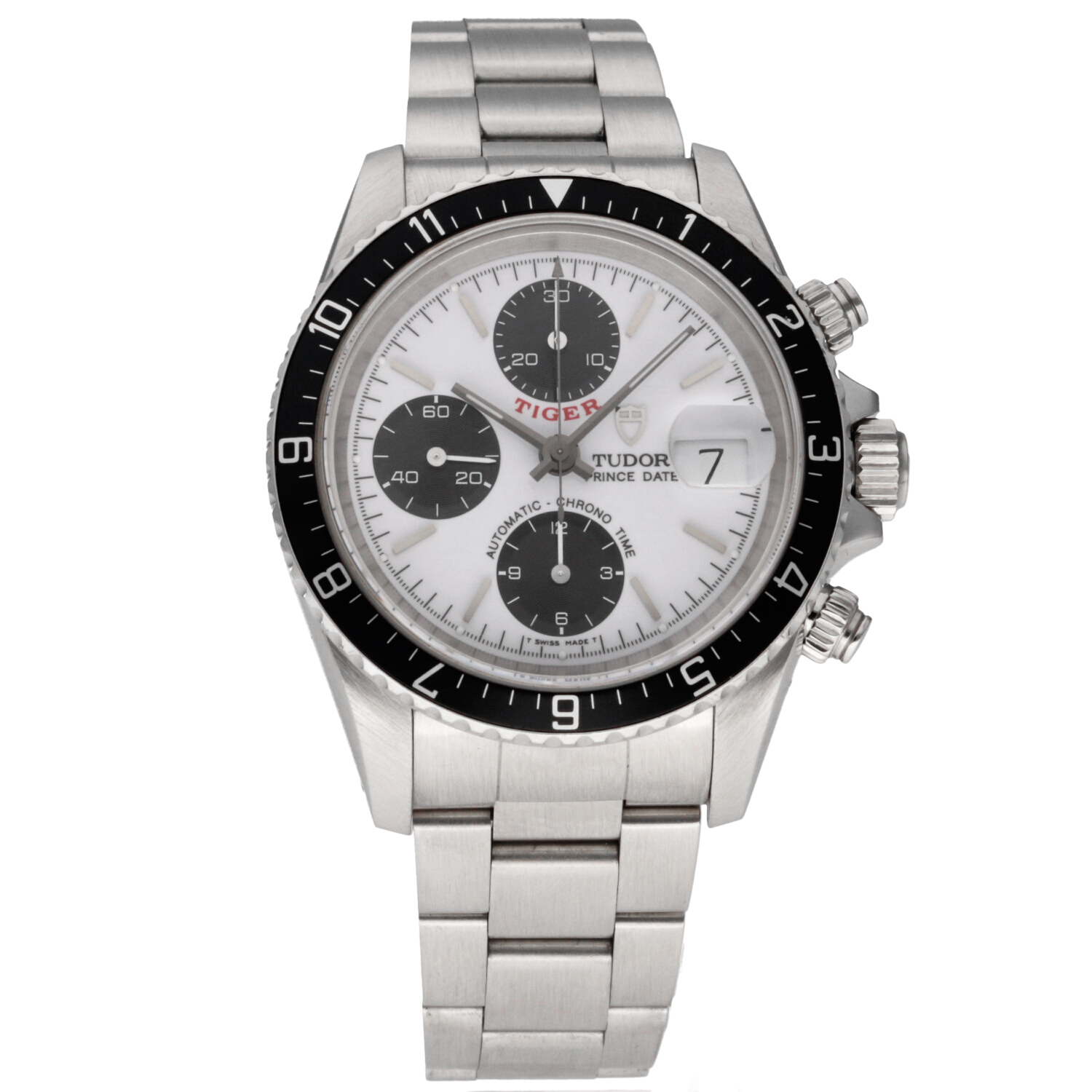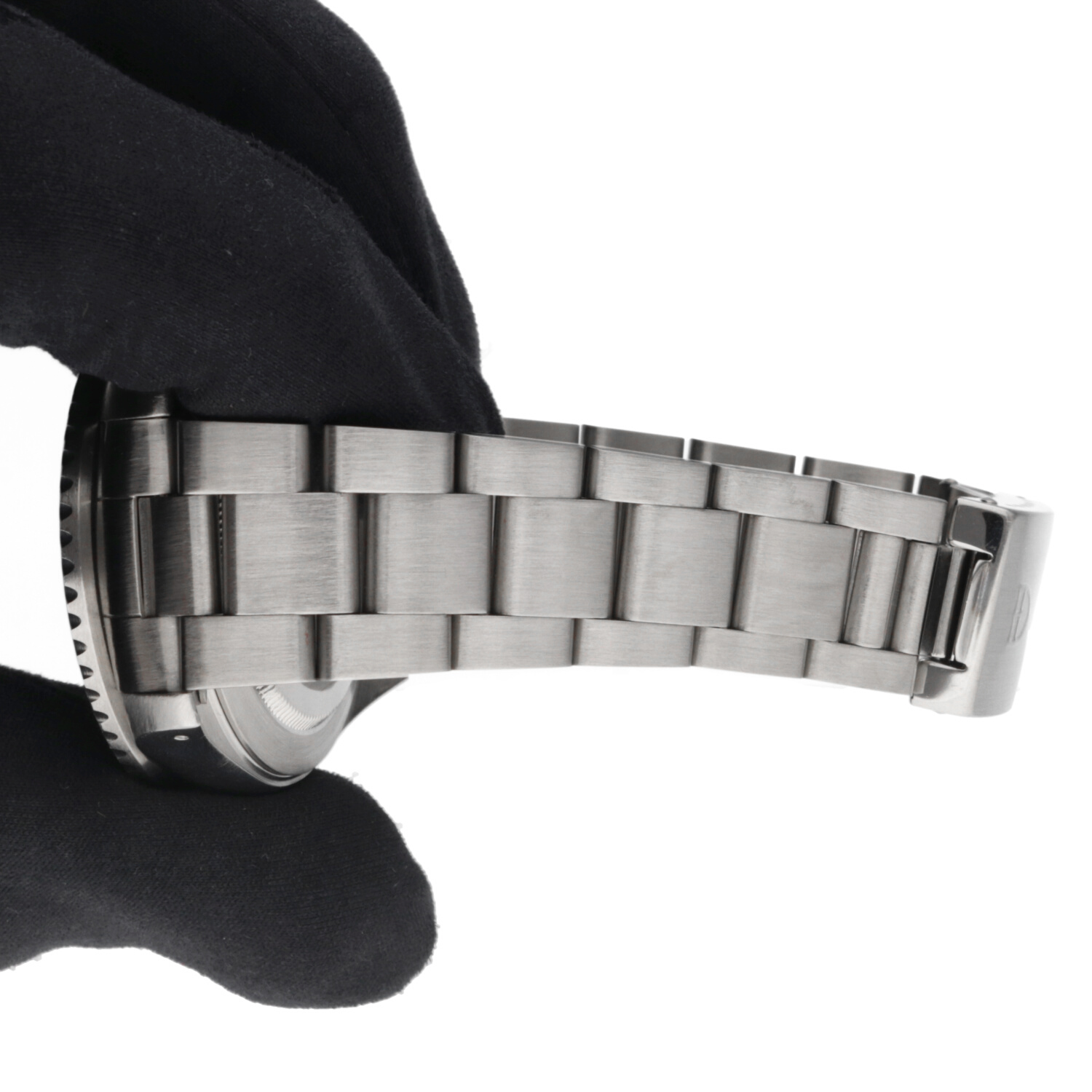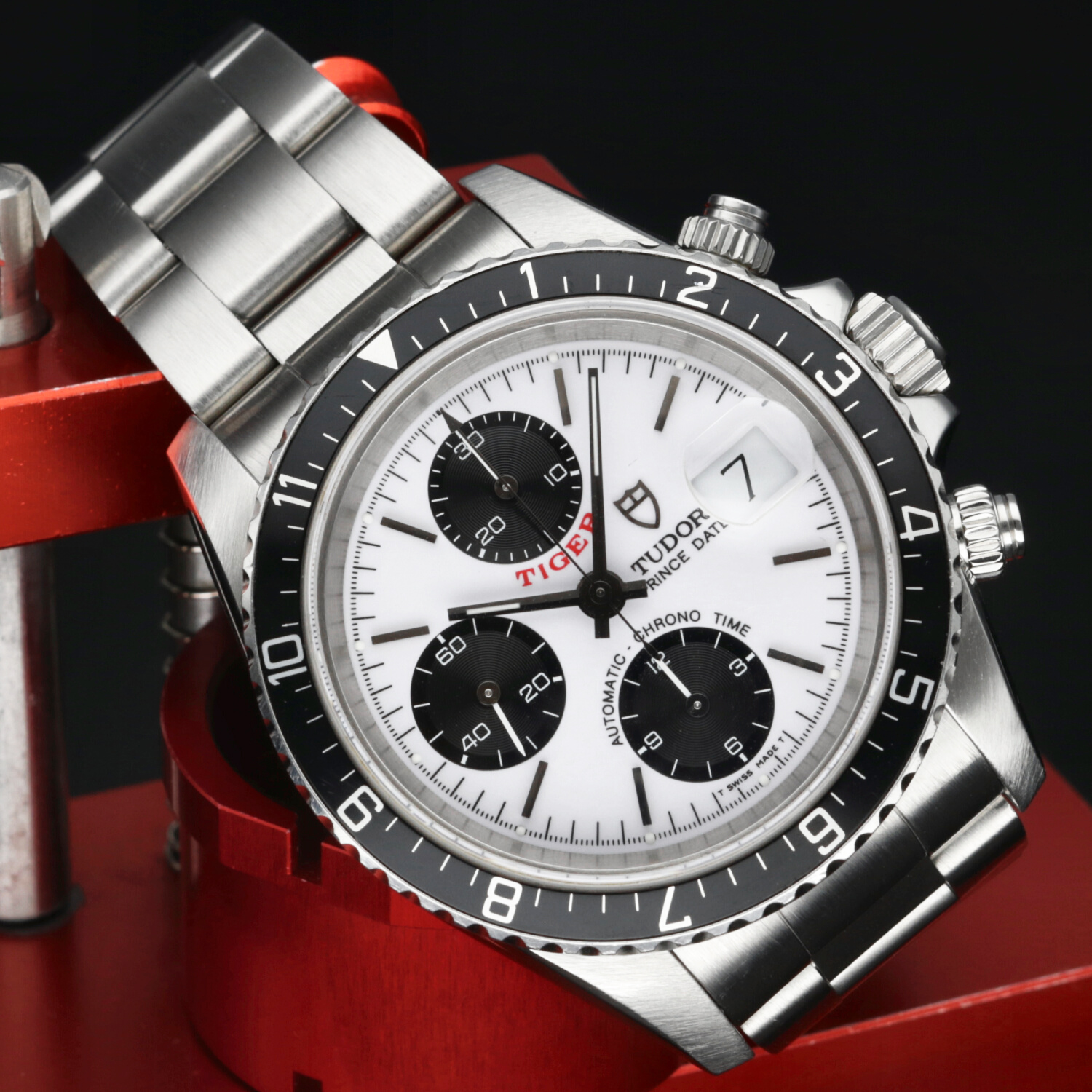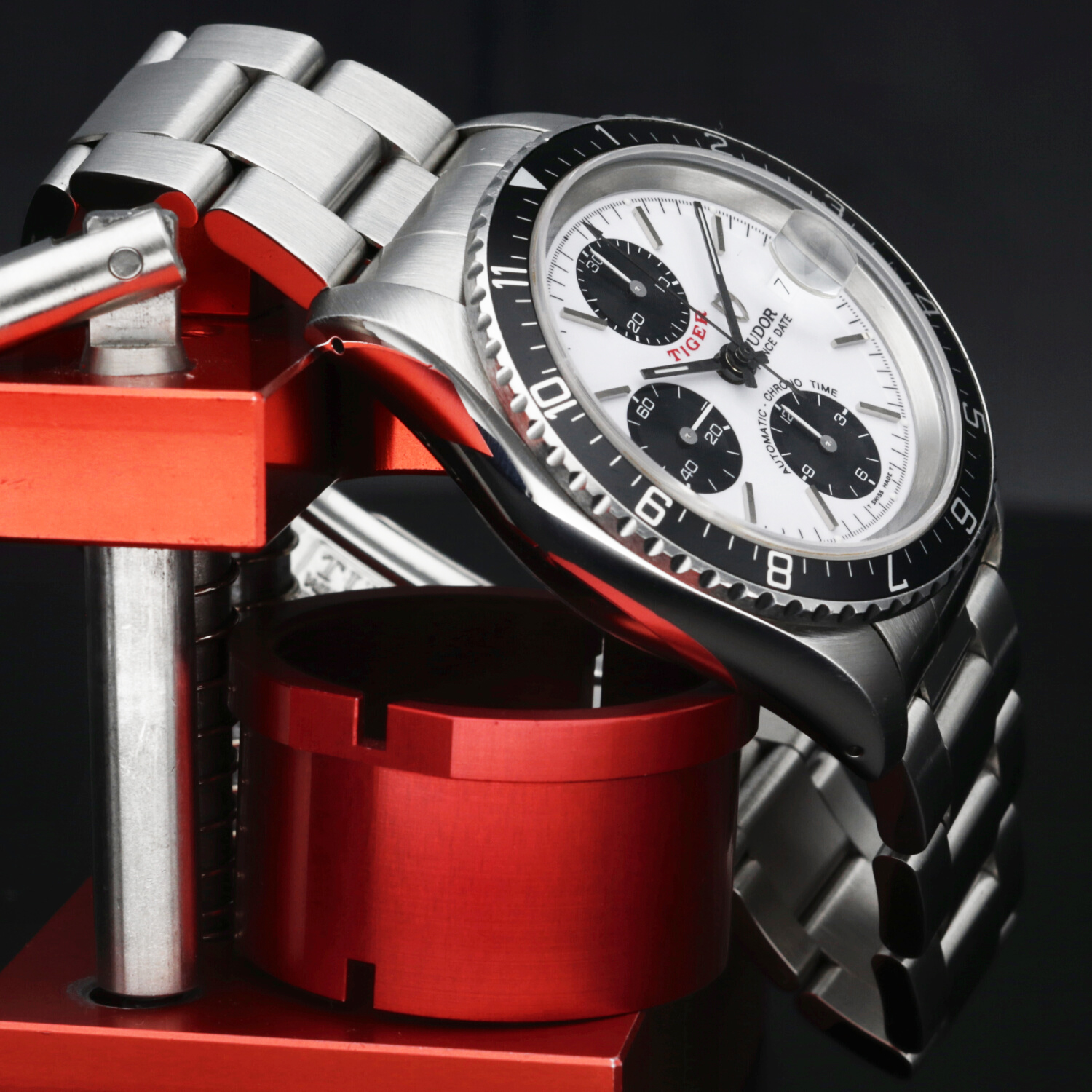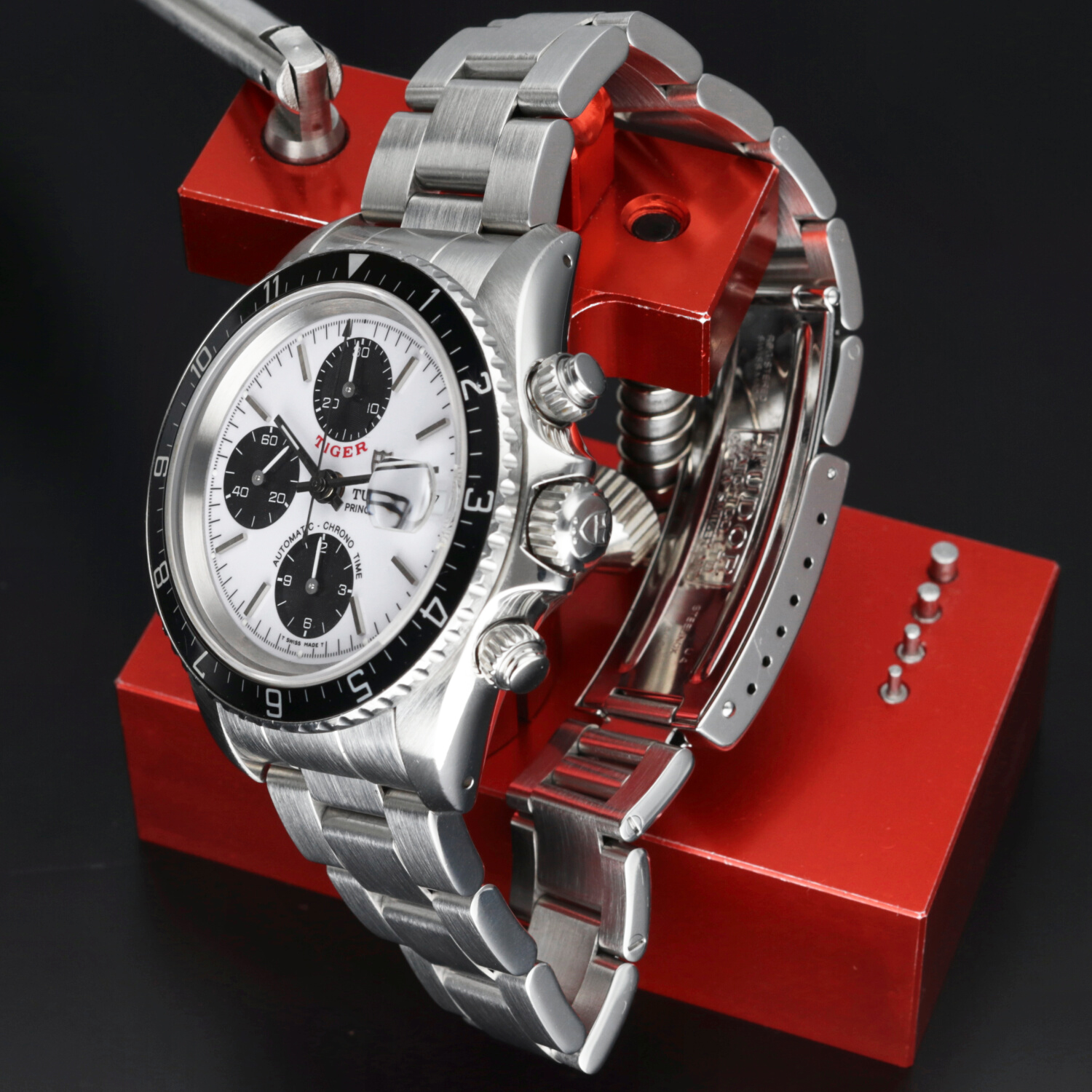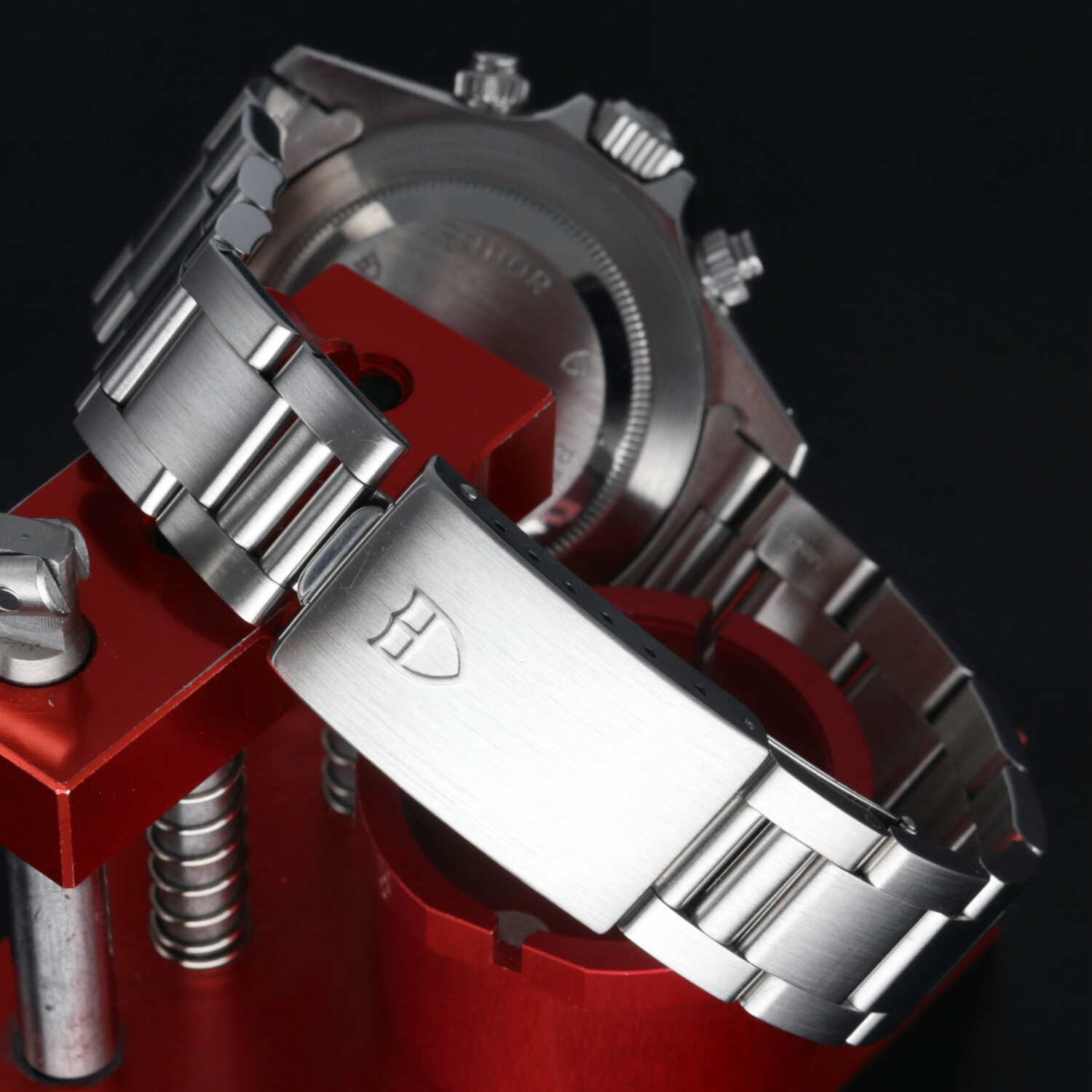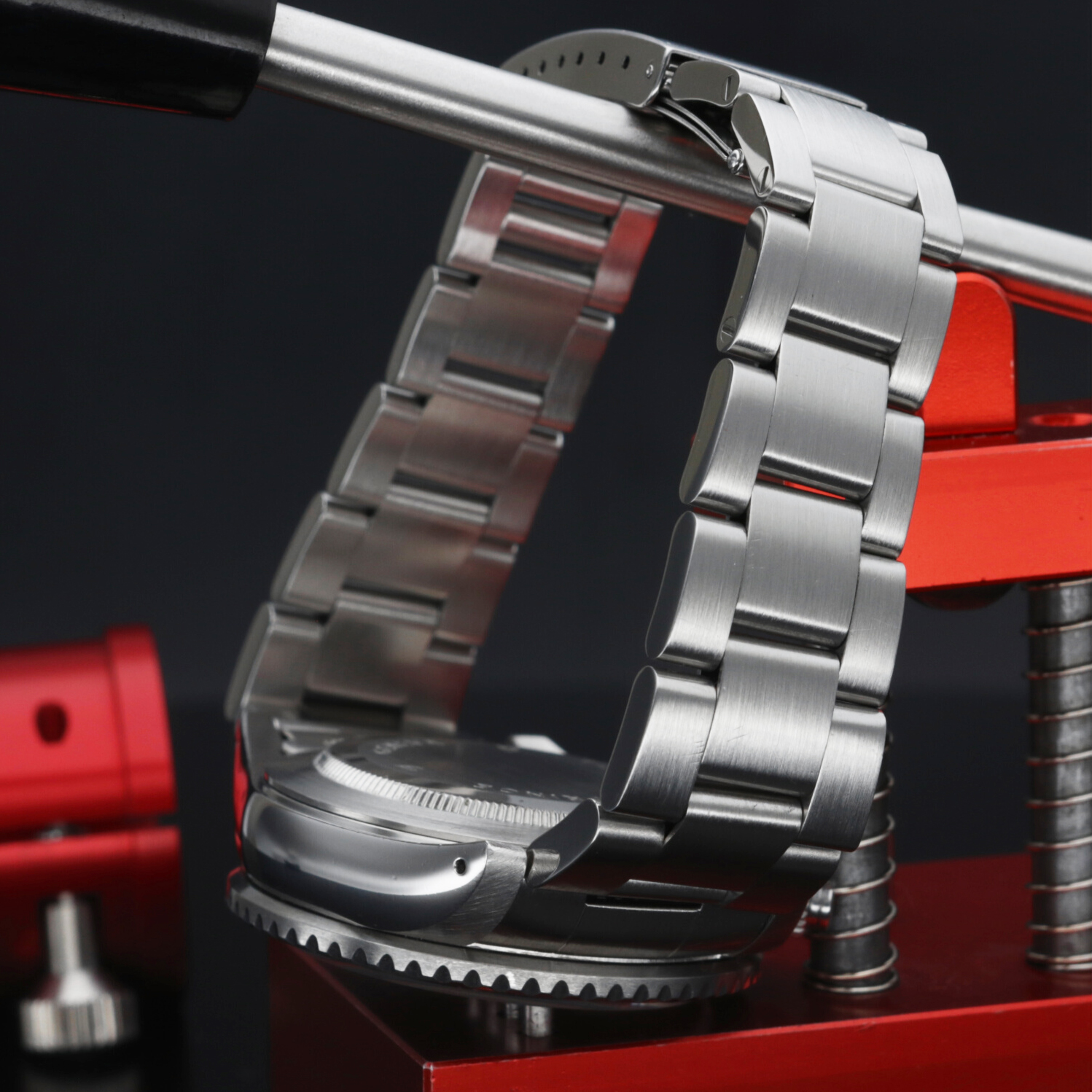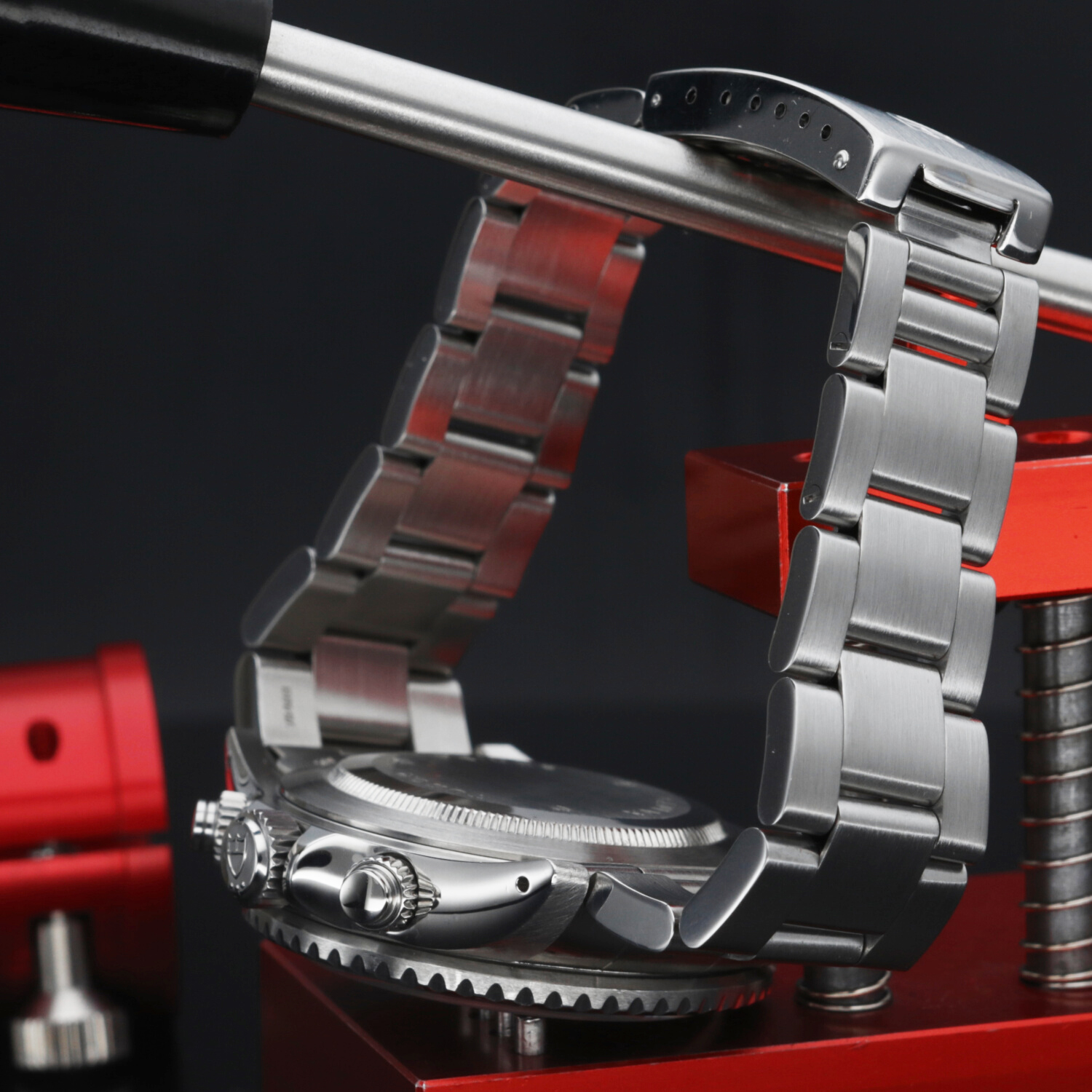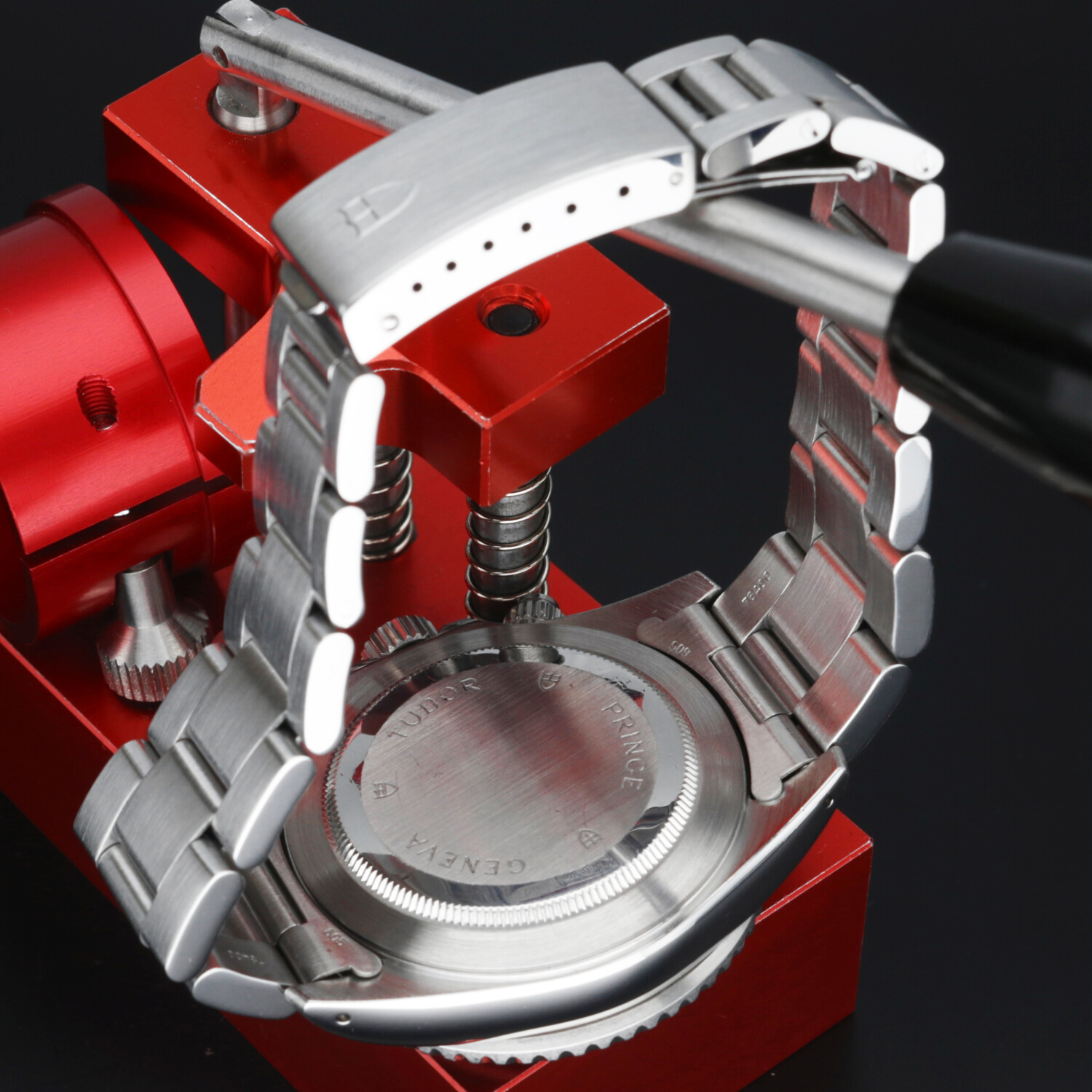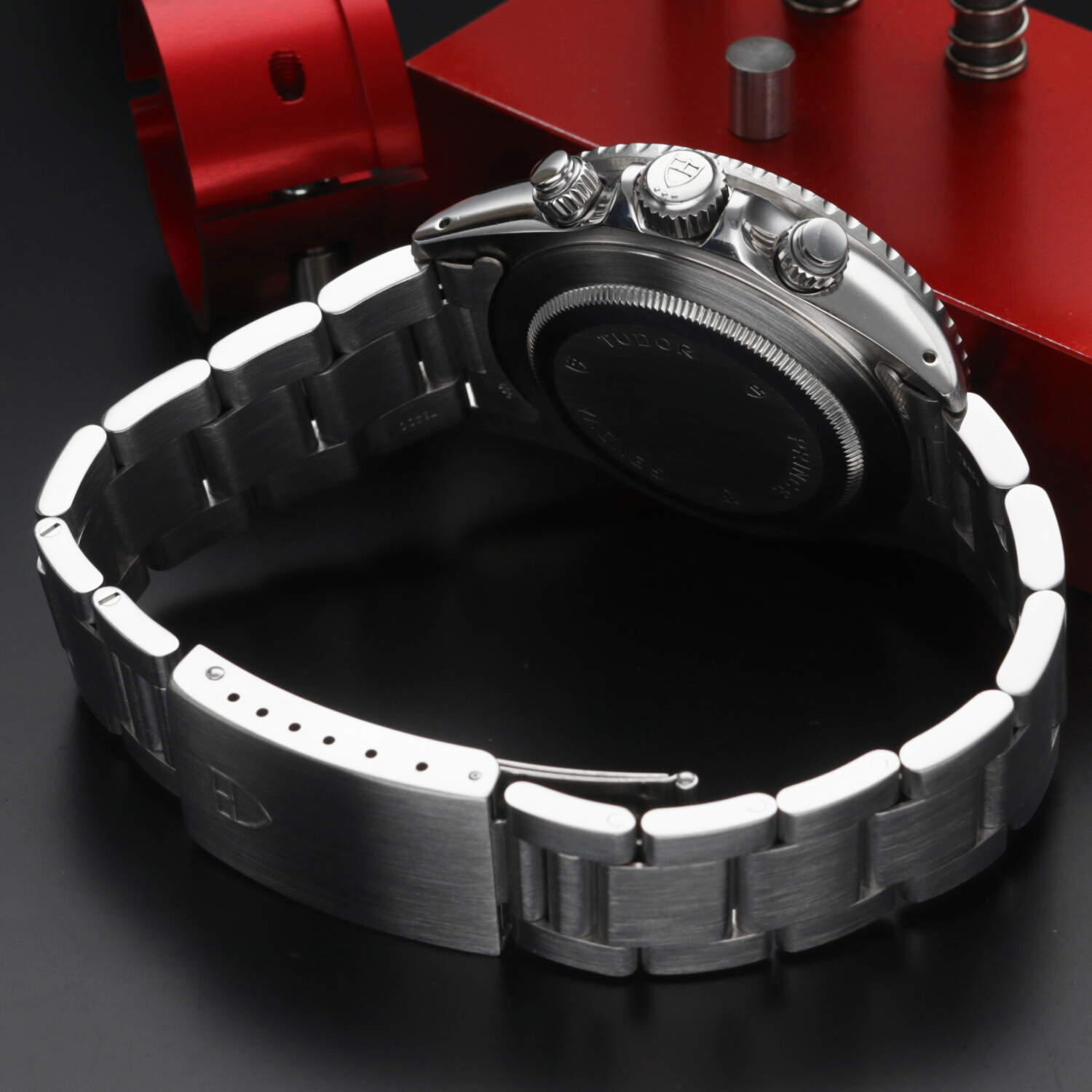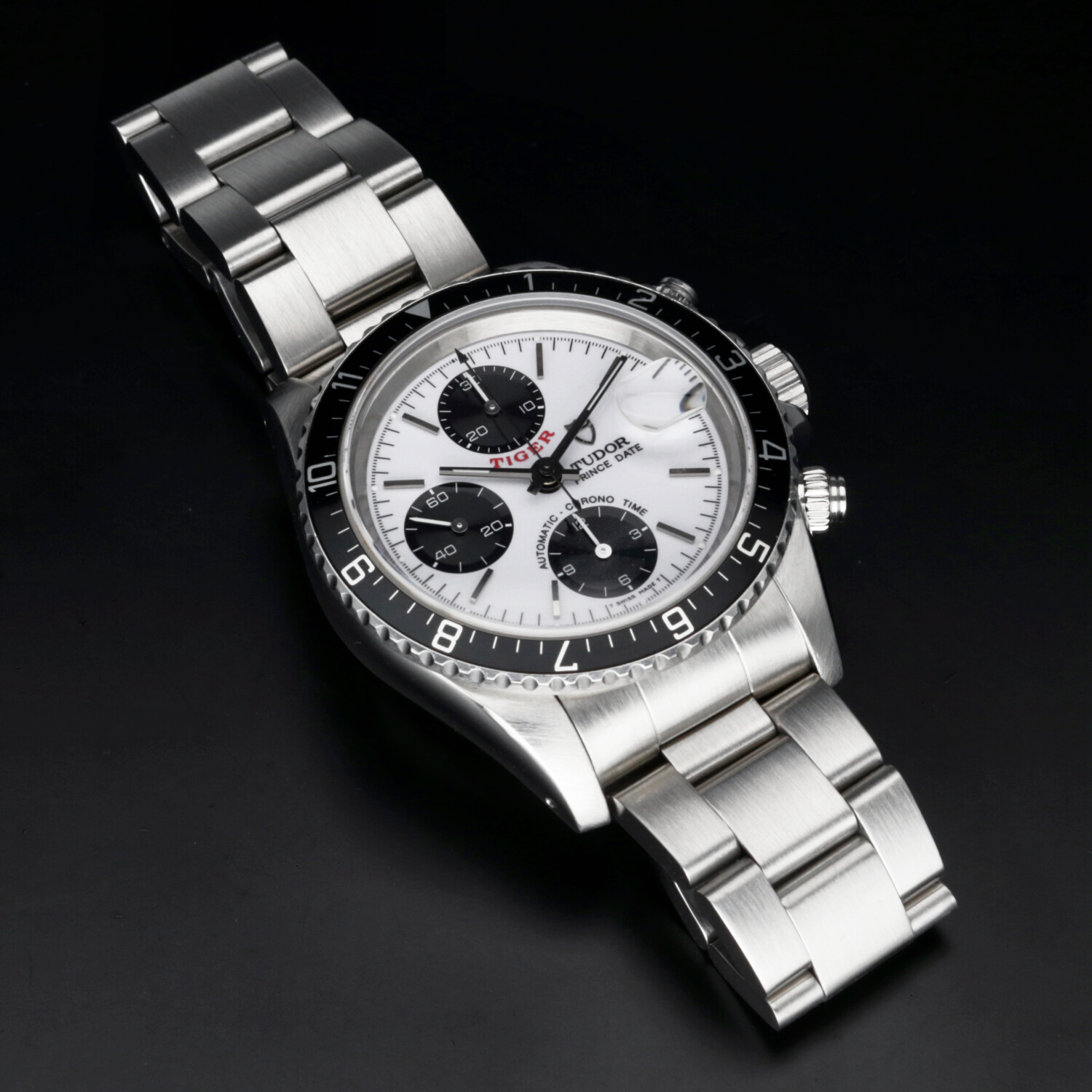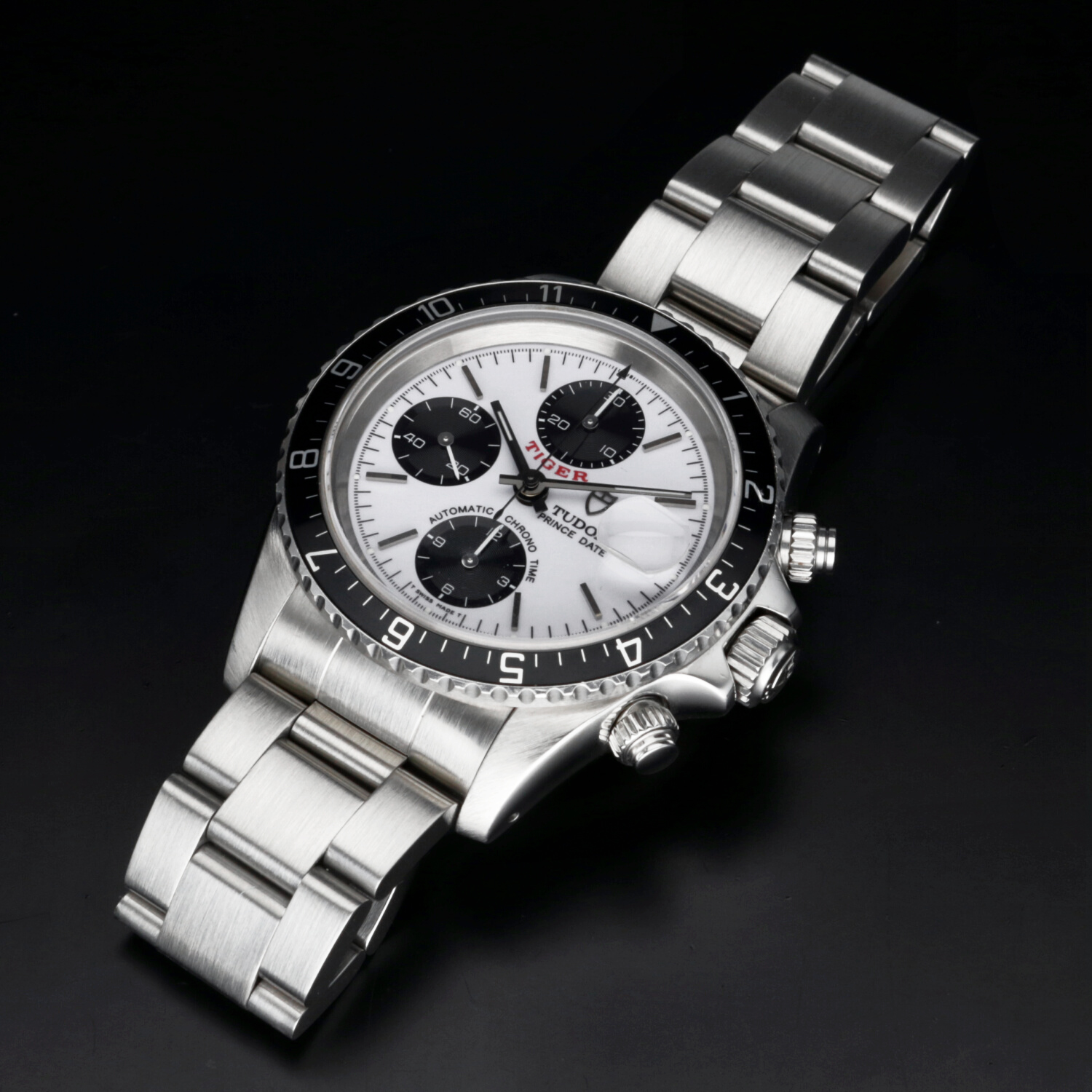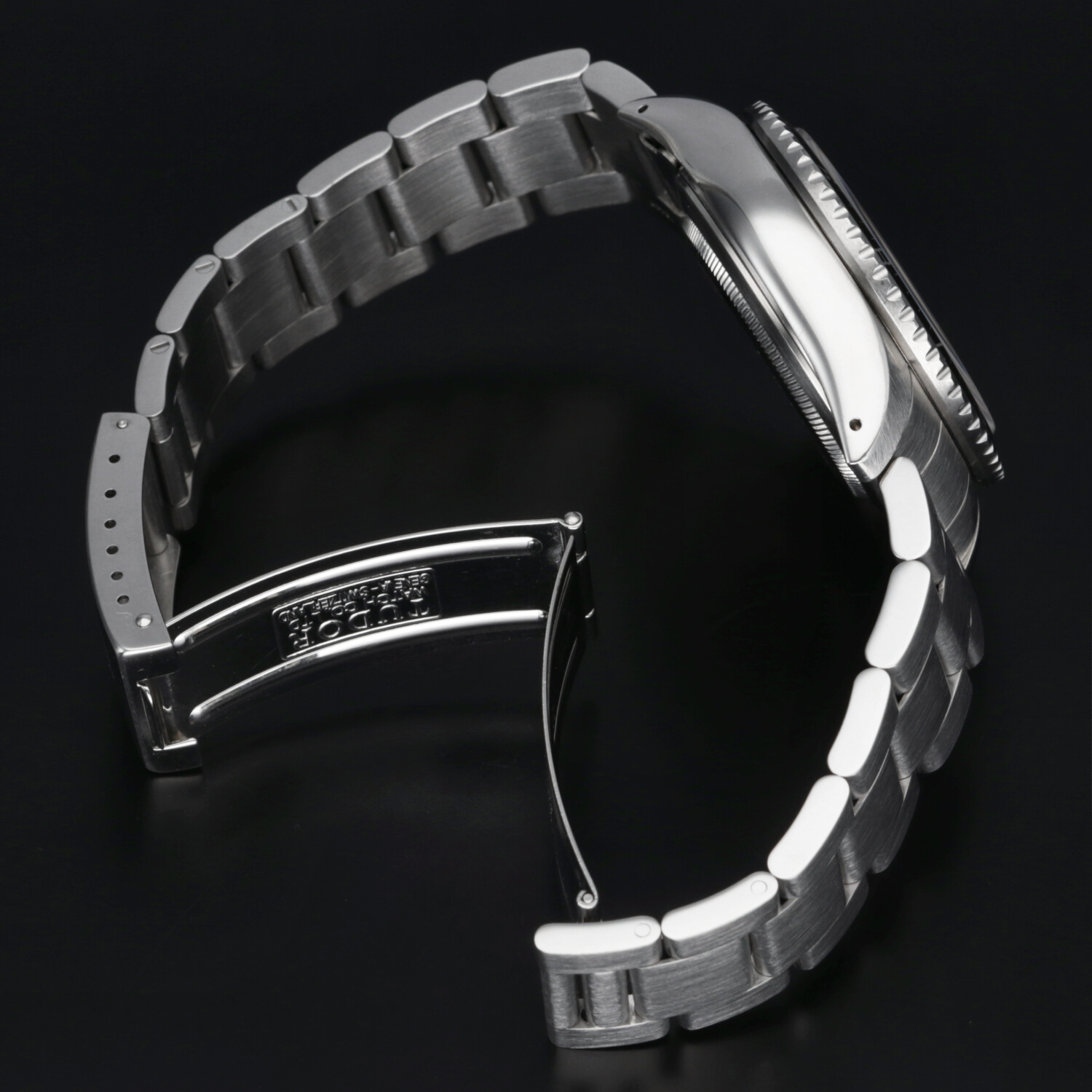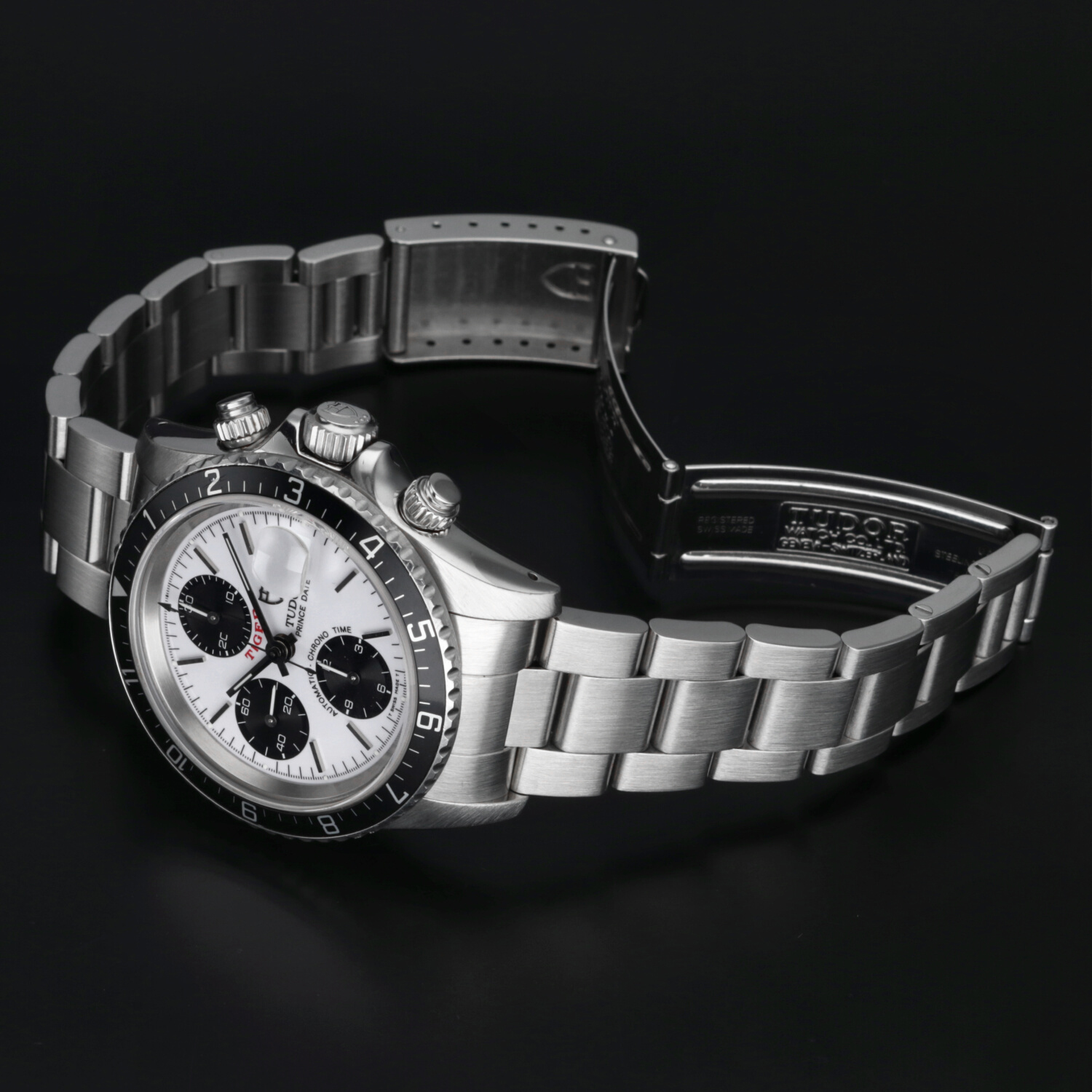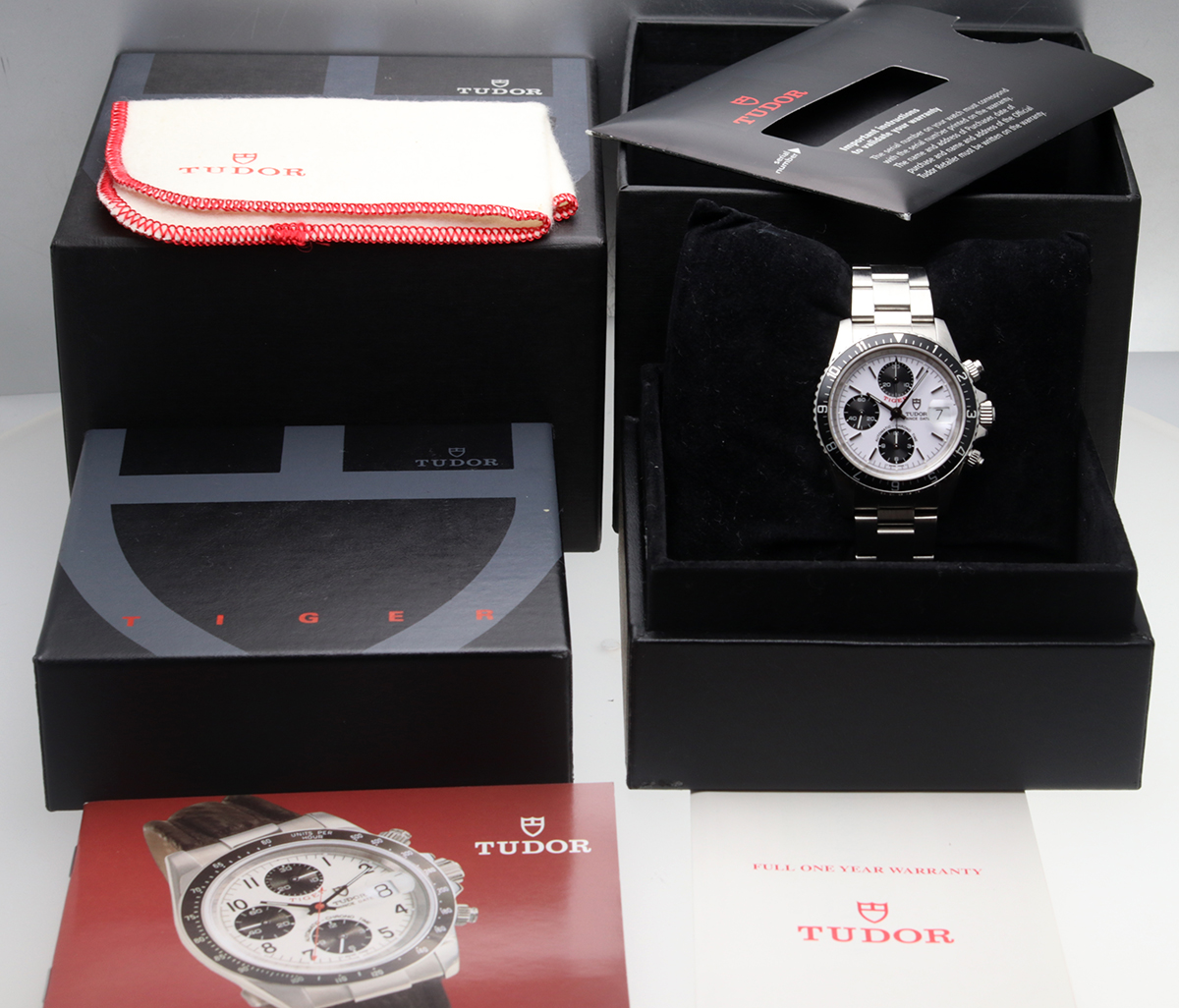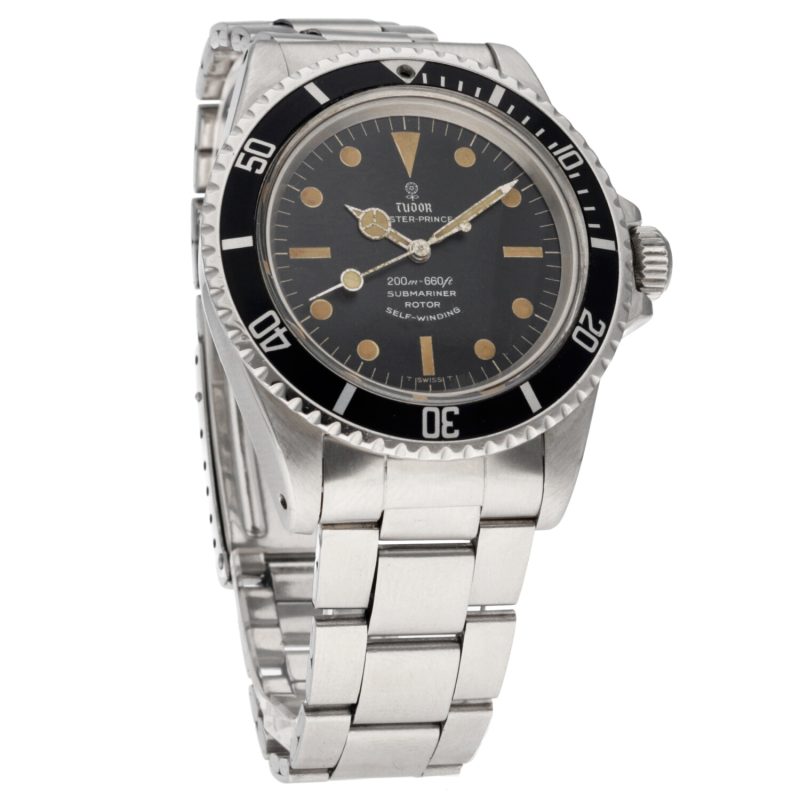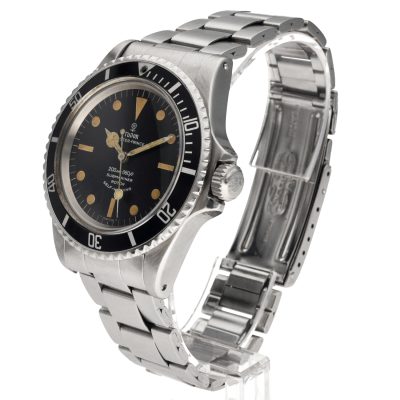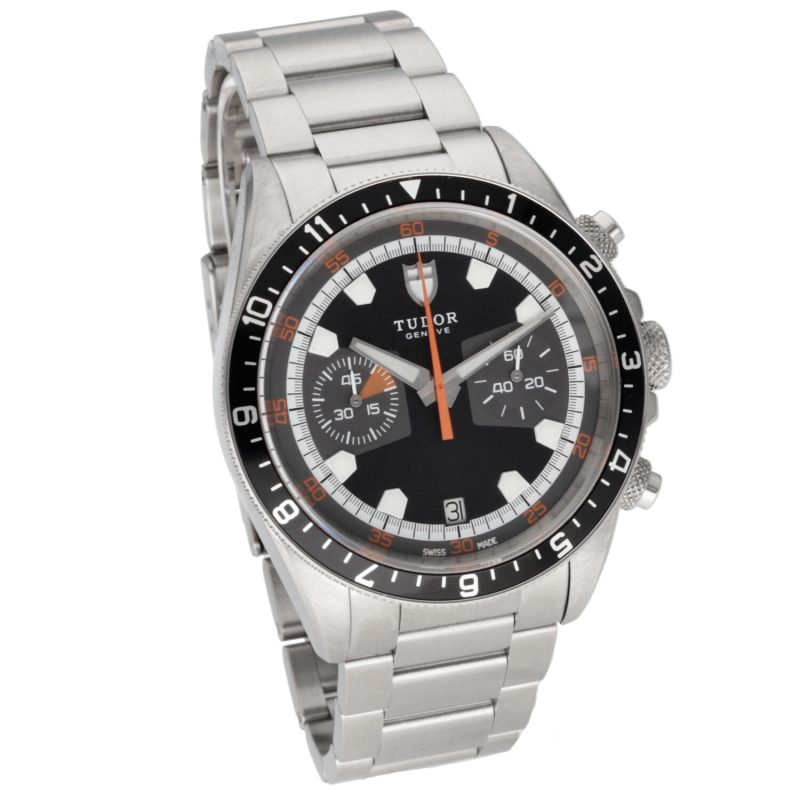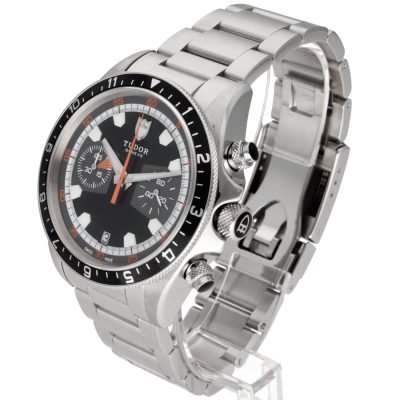1997 Tudor “Tiger” ref. 79270 Chronograph Prince Date Small Block Panda “Porcelain” Dial, Box and Papers
Shipping Free by Express Courier
14-day inspection period
Authenticity Guaranteed
2-Year Limited Warranty

Additional information
| Brand | |
|---|---|
| Model | |
| Ref. | 79270 |
| Serial Number | B88**** |
| Year of production | |
| Movement | Automatic |
| Case material | |
| Size | 40 mm |
| Dial | White |
| Bracelet material |
Info
The Tudor Chronograph saw its “birth” in 1976 with the 9400 series, and was the first chronograph from the Swiss brand Tudor/Rolex to be equipped with an automatic movement, 12 years before elder sibling Rolex fitted the Daytona with self-winding ones. To accommodate the rotor of the movement the case of the Prince Oysterdate was made thicker, hence the nickname of “Big Block”. In 1989 the 9400 series was replaced with the 79100 series, the changes introduced compared to the 9400 series were however minimal. Both series used a large number of Rolex components, such as the winding crown, chronograph push-piece, bezel, caseback, crystals and bracelets, the latter being replaced with Tudor shield clasps late in the series’ production 79100. In 1995, with the introduction of the series of 79200 references, the appearance of the Prince Oysterdate self-winding chronograph was rethought subtly but significantly. To begin with, the case, which over three generations of chronographs had essentially retained its famous imposing, sharp presence, became more refined and softer (Small Block). Another notable change, a sapphire crystal with a Cyclops lens was adopted to replace the Plexiglas crystal. Thus the direct references to Rolex were gradually disappearing from the cases, winding crowns and bracelets of TUDOR watches. The watch for sale, serviced, with reference 79270 (black bidirectional 12-hour graduated bezel, satin-brushed case lugs) is completely coeval, was produced by Tudor in 1997 and sold by an official Tudor USA dealer in October 1999, and has a beautiful, sought-after and rare “Tiger Woods” panda white “porcelain” dial. As with the Rolex Daytona Zenith from the late 1980s, the printing of this dial has undergone a very particular process, a glossy protective varnish, Zapon varnish, has been sprayed on the white enamel, which gives the writings on the dial a fantastic 3D effect but above all it gives the general appearance that characteristic that suggests porcelain, and it is from here that its nickname “Porcelain dial” derives.
Case, Bracelet, Dial & Glass
Excellent case that shows very light wear from use. The black bezel insert is also in excellent condition and shows very light wear.
Excellent 78400 Tudor oyster bracelet with 13 links (complete) and 605 end links . The clasp is stamped with a U4 date code. Bracelet has very light stretch and fit a max wrist around 21 cm.
Excellent white Panda “Porcelain” date dial with chrono functions.
Excellent sapphire crystal.
Accessories & Warranty
Original Tudor “Tiger” inner and outer box, Tudor warranty paper, card holder, booklet, cloth, our warranty card, certificate of authenticity and lawful origin.
Serviced, Two-Year Limited Service Warranty with certificate of authenticity. The OeDVintage, Orologi & Dintorni Vintage. Two-Year Service Warranty is limited to two full year from the date of your purchase. The limited warranty covers mechanical issues not related to negligence or any type of user-inflicted damage.
You may also like…
8.990,00€
3.390,00€


